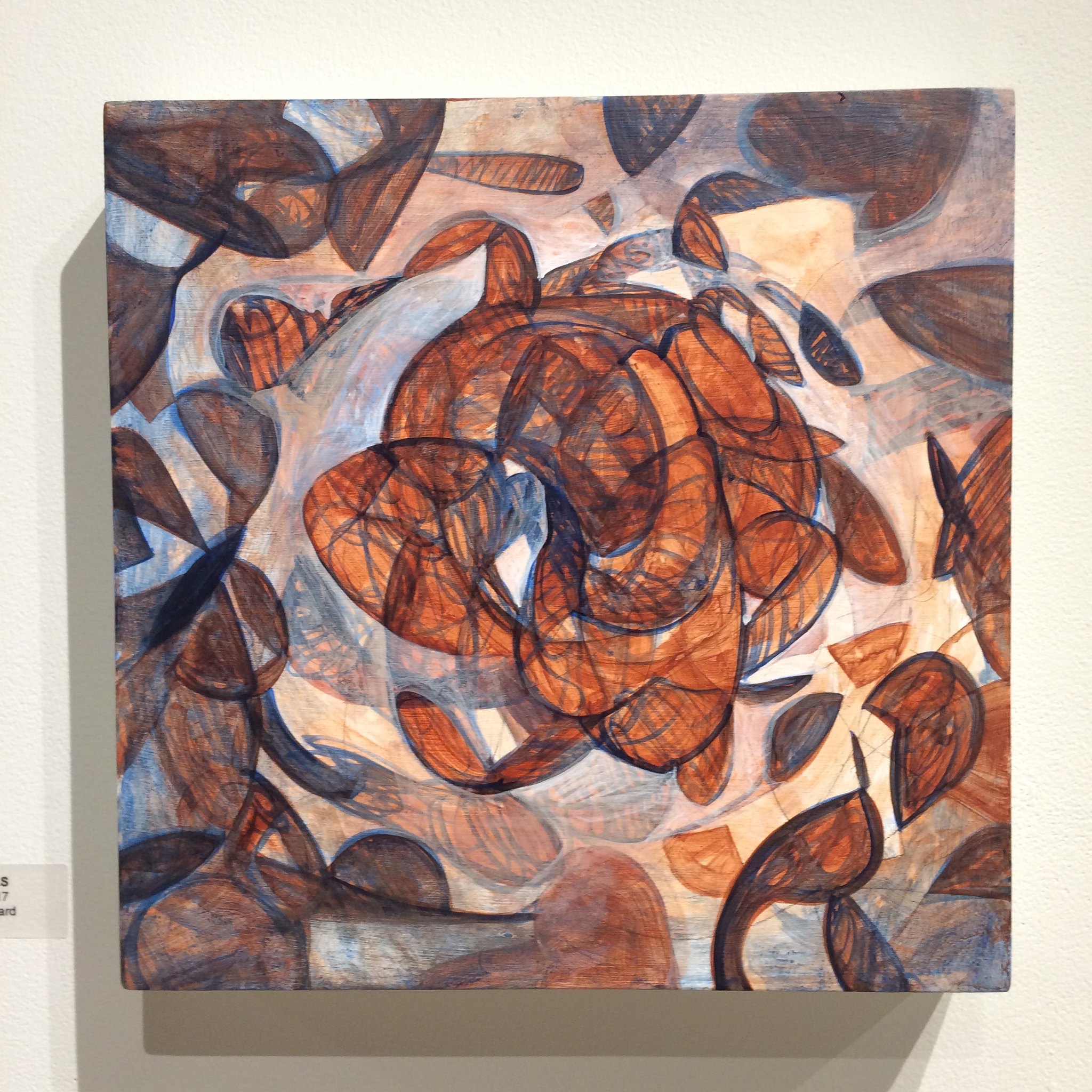Long Look: Alstroemeria

Alstroemeria
Artist: Heather Adels
Year Created: 2017
Artform: Painting
Materials: Acrylic
Surface: Masonite
Dimensions: 12in x 12in
Gallery/Museum/Collection: Davis Gallery; Collection: Estate of Heather Adels
Viewed: August 10, 2017
I visited Davis Gallery yesterday to see Heather’s show one last time before it closed. I went to the opening, of course, but in the crush of people I didn’t feel I had time to really sit with the work. I miss talking about her work, and talking about art in general.
I spent the most time with this unfinished painting, “Alstroemeria,” in part because it’s her final painting, and in part because I may never see it again. The gallery had a few people passing through, but it was quiet enough that I could pull up a chair and sit with this painting, which I did for about forty minutes. The painting is 12 inches by 12 inches, acrylic on prepared masonite.
Until I looked up the name, I didn’t realize that this was part of a series that Heather had talked to me about. She had made one of her papier mache artworks for a friend’s child. Instead of casting a sphere or other shape as she did for some of her works, she bought a papier maché letter and drew on it. She said that she was thinking of making an alphabetical series of works, where each letter had a flower (Alstroemeria is the formal name for the Peruvian lily), a letter, and an infinity drawing (these are what she called her drawings that were on cast papier maché spheres). So this was the first of what was intended to be a long series of works; it was the A of A to Z.
I last spoke to Heather late in the evening the day before she died, and when she talked to me, she was sitting in front of her large easel, working, on this painting. Every time I see one of her paintings, I think ‘her hand touched every millimeter of this surface.’
This is an unfinished painting, and so a viewer can see the mechanics of how she constructed her paintings in a way that isn’t visible in her finished works. If you zoom in (this is a high-definition photo, although I don’t know if FB compresses images upon upload) you can still see both pencil marks and india ink marks, which she did with a pen nib dipped into an inkwell. She’d use a repeating figure and overlap and twist it again and again, and then use those lines to inform the shape she was building up. This ring, or perhaps flower shaped central motif is one that showed up a lot in her later work. It’s also easy to see one of her other signature techniques: using incredibly thin layers of acrylic paint to build up a painting. She used acrylic paint the way other artists might use watercolor, thinning it out a great deal before applying it to the surface. It’s beautiful but also makes the resulting paintings somewhat fragile; they shouldn’t be exposed to extreme heat or cold.
She had told me a few weeks before that she was really enthusiastic and pleased by the fact that she was getting faster and looser with her paintings; she sometime struggled with getting stuck with a painting and doing what she called “overpainting” it, making it too dark, or too stiffly detailed for her liking. Series were a frequent way that she tried to shift into a new period; some years before, she had painted 59 small paintings in 61 days for the same reason, to loosen herself up and become less afraid of a painting not being perfect or “done.”
I really enjoyed the role of “Art Spouse,” bringing her food and tea when she was working hard to meet a deadline for a show, arranging for the transportation of the works (and her!) to a show so that she didn’t have to do anything except show up and be fabulous on the day of a show.
This post was ‘transplanted’ from a Facebook post I made on August 11, 2017. The observations here are typical of the ‘long look’ process I use to connect with and observe an artwork.